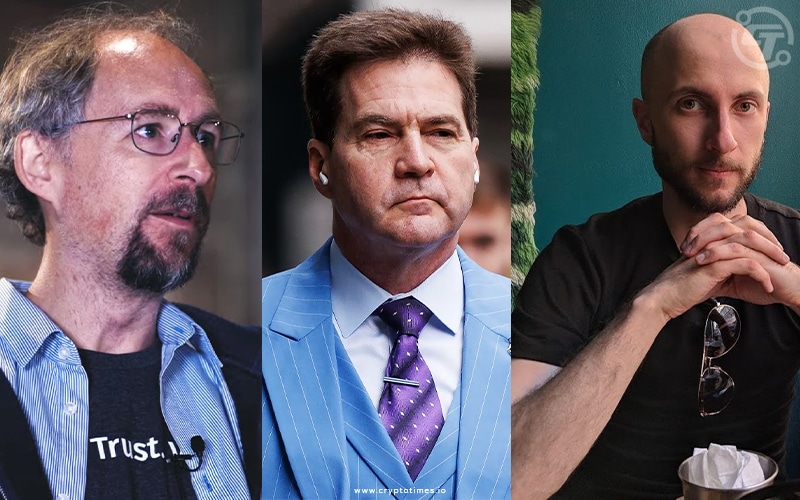On the thirteenth day of COPA v. Wright, Martti Malmi, and Adam Back were put through cross-examination and sworn in as a witness at the UK High Court of Justice.
Martti Malmi: the first witness in COPA v. Wright Day 13.
Martti Malmi, one of the original Bitcoin developers, gave a witness statement on the COPA v. Wright trial.
In 2009, Malmi was able to communicate directly with Satoshi Nakamoto through IRC chat and email. Malmi made a distinction between Craig Wright and Satoshi, in contrast to what Wright’s legal team said.
His contribution to the early Bitcoin forum on SourceForge, which subsequently moved to BitcoinTalk.org, was substantial. Malmi updated the website in a number of ways, including by creating content using Satoshi’s suggestions.
Claims pertaining to the Bitcoin forum server migration were the main topic of the cross-examination. Malmi explained that instead of a server migration, there might have been a DNS redirection.
Additionally, he explained that although admin capabilities may be cloned, they did not immediately transfer during a website conversion. Despite the migration’s eventual impact, Malmi disputed that it was intended to take away Satoshi’s access.
In reference to private correspondence with Satoshi, Malmi remembered only a few exchanges and rejected correspondence via the SourceForge code project. Wright asserted that there was communication via an alternative message system. Malmi attested to the fact that Satoshi never asked to access servers following the relocation.
Malmi remembered that in a different conversation, Satoshi talked about allowing the use of sidechains like BitDNS and adding timestamps to files inside the Bitcoin protocol.
His testimony shed light on Satoshi’s intentions to enhance Bitcoin’s functionality. All things considered, Malmi’s testimony illuminated a number of facets of Bitcoin’s early history.
After inquiring as to whether Satoshi had ever asked to visit the servers that BitcoinTalk had moved to, Judge Mellor freed Malmi. In response, Malmi said Satoshi hadn’t inquired.
Adam Back: the second witness in COPA v. Wright on day 13.
Adam Back, a prominent member of the cryptocurrency community and executive at Blockstream, returned to the witness stand during a recent session of the UK High Court of Justice.
In a paper that he released in 1997, Back initially introduced HashCash. HashCash was first intended to be a way to prevent email spam by imposing a modest price on each email sent. Millions of spam emails could become more expensive to send with such a method.
In 2002, Back suggested using HashCash for countering denial-of-service attacks. Wright’s lawyer noted this and emphasized Back’s idea of integrating HashCash with Wei Dai’s B-Money. Back acknowledged that he was unable to verify with certainty if Wei Dai, one of the original Bitcoiners, uploaded his B-Money paper to the Cypherpunks mailing list.
Wright’s team presented Back’s initial HashCash document, which was circulated on the Cypherpunks mailing group, in court. Citing members such as Hal Finney and Zooko Wilcox, Wright’s lawyer characterized Cypherpunks as libertarian proponents of cryptography for social change.
Back acknowledged sharing interests, but denied a strong friendship, claiming they had never met in person. Back retaliated to Wilcox’s declaration of friendship by saying Wilcox had blocked him for questioning his altcoin, Zcash.
Back mentioned HashCash’s potential for digital currency while the lawyer questioned the company’s initial goal of limiting spam emails. Back brought up the original paper’s discussion of HashCash’s potential monetary value in society when questioned about its main topic.
To prevent spam, HashCash, compared to a stamp by Back, requires computing a hash before sending an email and confirming it after it was received.
While acknowledging that she had cited Meliie and Franklin’s work, Back insisted she was not familiar with Dwork and Naor’s earlier work. He insisted that HashCash was only there to stop spam and had no plans to build a system akin to Bitcoin. Back argued that Bit Gold was more similar to Bitcoin and questioned Satoshi’s knowledge of Bit Gold or B-Money.
Back, a Blockstream executive, refuted Wright’s criticism of Lightning Network by claiming that it solves the scaling issues with Bitcoin. While acknowledging Blockstream’s prior patenting, he emphasized their move via COPA collaboration towards open-sourcing patents.
Back rejected the idea that Blockstream benefited from Wright’s failure and called BSV a copycat concept. Drawing a comparison between Wright and “an Elvis impersonator,” he implied transience without sincerity.
Martti Malmi and Adam Back, early Bitcoin pioneers, testified in Craig Wright’s pivotal lawsuit. Both communicated with Satoshi Nakamoto directly. Their technical testimony, spanning DNS and Bitcoin’s predecessors, will influence the ruling on whether Wright authored Bitcoin’s whitepaper.
Also Read: Wright Unleashes 164,000 Pages in COPA Trial







